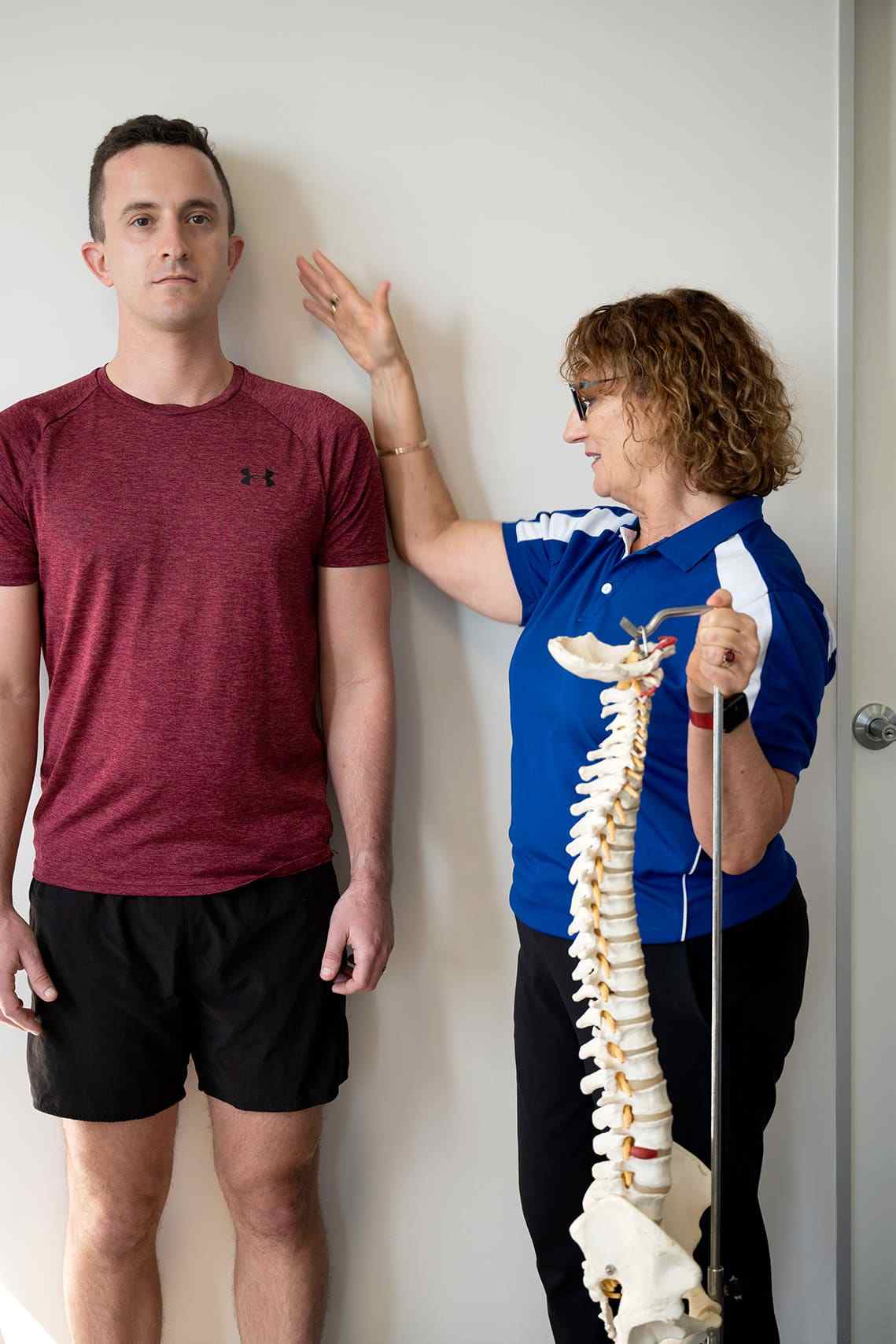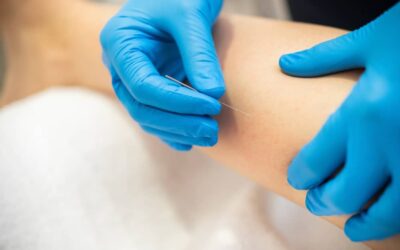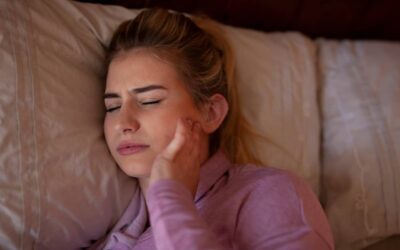Bone Health
Trust Graceville Physio, Pain Slayers for your osteoporosis treatment Brisbane.

Bone Loading Class – Weight Training For Osteoporosis Brisbane
At Graceville Physio, we run bone loading weight training classes for patients with osteoporosis, osteopenia, or who may just be concerned with their bone strength as they’re getting older. Our weekly classes are held on Thursdays at 10am and will provide you with the benefits of consistent strength training. These classes are led by Matt, one of our qualified physiotherapists, and our small, four-person limit ensures that you’re receiving the attention and guidance you need. Classes are $45 a session.
For more information about our classes, make sure you get in touch with us today.
Contact us today to discuss your declining bone health, or start taking active care of your bones to ensure you stay active for many years.
What is Osteoporosis?
Osteoporosis is a condition in which people experience reduced bone density, which leads to a higher risk of fractures. In Australia, over 1 million people currently have osteoporosis, which is roughly 1 in 25. Women have a higher risk of developing the condition, due to hormonal factors, but men are still at risk of developing the condition. Other risk factors include:
- Being over 50
- Family history of osteoporosis
- Low calcium and vitamin D levels
- High or low body weight
- Smoking
- Excessive alcohol intake
- Chronic corticosteroid use (such as asthma inhalers)
While osteoporosis is typically seen in the older population, people under 50 years of age can still potentially develop the condition. Anyone with a history of bone fractures, such as runners, or those with eating disorders or chronic fatigue are often screened for osteoporosis. The condition is diagnosed via a bone density, or DEXA scan, which can be referred by your GP. If you have any risk factors for osteoporosis, it’s typically recommended that you receive a DEXA scan for diagnosis, and then continue to have regular scans to monitor your condition.
As with many things, prevention is often the best treatment. Lifestyle factors such as smoking, excessive alcohol use, or high or low body weight can be addressed to minimise this risk. Additionally, increasing vitamin D and calcium intake can also be beneficial )whether this is via diet, medicine, or sun exposure for vitamin D). An effective strategy to assist with improving bone density is a specific weight-bearing exercise routine, gradually increasing the resistance.
At Graceville Physio, we offer bone loading classes that are run by our experienced physiotherapists. If you’ve been diagnosed with osteoporosis, this treatment can help improve bone density and your enjoyment of life.
How do I improve my bone health?
People under 18
People aged 18-64
In adulthood, impact activities such as running and jumping, or weight training are still the best method. The World Health Organisation recommends at least 150 minutes of moderate intensity physical activity plus two strength training sessions per week for those aged between 18-64 years old, which can be especially difficult if you’re working from home. For the best bone health results, any strength training needs to be quite heavy, so it’s best to consult a professional for the best technique and a gradual progression.
People aged 65 or older
For those aged 65 or older, it’s even more important to maintain good bone health than any other stage of life, as after this age the decline of bone density is more rapid. Weight training is still important, under the guidance of a professional. It’s also quite common that the risk of falls increases for those this age, due to a range of factors such as reduced balance or poor eyesight. To help this, classes such as pilates or specific balance classes can be valuable.
The benefits of bone loading exercise for osteoporosis
Osteoporosis is a highly prevalent condition in the community. A recent burden of disease report from Osteoporosis Australia estimates that 1.1 million Queenslanders over the age of 50 have poor bone health. The report also shows an increase in fractures associated with poor bone health by 46% every year over the last 10 years. The total healthcare costs due to these conditions have also been increasing over the last 10 years, with a total estimated cost of $4.3 billion (spent on ambulance services, hospitalisation, rehabilitation, aged care and community services).
An effective strategy to improve bone mineral density in patients with poor bone health is bone loading classes. The LIFTMOR Trial demonstrates improvements in bone health after high-intensity resistance and impact training. 101 post-menopausal women with either osteoporosis or osteopenia (the majority of sufferers of these conditions fall into this category) were included in this trial.
The trial compared a high-intensity resistance and impact training program to a low-intensity home exercise program over the course of 8 months. The high-intensity training program used is ofter perceived as having a higher risk of injury, due to the weight load, however, no adverse effects were found as each participant was supervised and coached. The low impact program consisted of a series of bodyweight exercises. At the end of the trial, researchers found significant differences in the bone density in several areas of the body, in favour of the high-intensity program. The author then suggested that these improvements helped reduce the risk of osteoporotic fractures.
At Graceville Physio, we highly recommend a program of high-intensity, resistance-based exercises t help improve mineral bone density for patience with osteoporosis and osteopenia. Our bone loading classes are supervised by an experienced physiotherapist so that we can ensure each patient is able to perform each exercise safely and progresses safely.
We can also discuss the medical management of osteoporosis and osteopenia to ensure you’re liaising with your GP to discuss bone mineral density, calcium and vitamin D levels. for more information or to book into our bone loading classes, please contact us today.

Frequently Asked Questions
What is the best treatment for osteoarthritis?
Osteoarthritis can be initially treated with anti-inflammatory medication for pain relief and to reduce swelling. However, for effective, long-term relief, we recommend an ongoing osteoarthritis treatment from a professional physiotherapist.
What is the difference between osteoarthritis and arthritis?
Rheumatoid arthritis is an autoimmune condition, where the immune system attacks the joints of the body. Osteoarthritis, on the other hand, is caused by wear and tear on joints throughout life, which is why ongoing physiotherapy can be a great treatment for lasting pain relief.
Contact Graceville Physio, Pain Slayers for effective osteoporosis treatment Brisbane
No matter what stage of life you’re at, bone health is something to take very seriously. At Graceville Physio, Pain Slayers we offer personalised treatment plans that take into account your situation and your life. Come see our qualified physiotherapists for effective osteoporosis and osteoarthritis treatment and take back your life today.
Latest News
Understanding a Frozen Shoulder
Understanding a Frozen ShoulderFrozen shoulder, also known as adhesive capsulitis, is a condition that causes shoulder joint stiffness and pain that can last for more than two years. The condition limits the shoulder's range of motion and makes everyday activities...
Treating shin splints with dry needling
Treating shin splints with dry needlingDry needling is an effective treatment for shin splints as it relieves muscle tension and promotes blood flow which reduces inflammation and eases pain. Shin splints can be a painful condition which occurs at the front of your...
Physiotherapy treatment of jaw clenching
Physiotherapy for Jaw ClenchingPhysiotherapy can help with jaw clenching by using hands-on therapy to perform stretching exercises, postural adjustments, and specific exercises to relieve tension and strengthen the jaw muscles. What is Jaw Clenching? Jaw clenching...



